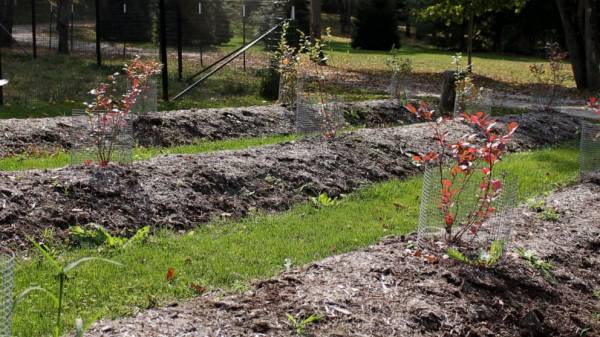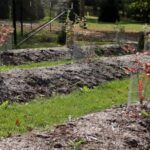
Odd weather this summer has taken its toll on many gardens. For many the problem is drought, but what if it just keeps raining?
In some gardens, water sits on the surface of the ground or the ground stays slurpy for hours after rain stops. The best advice then is to move the garden to a spot where the soil drains better.
But, of course, you want to keep your garden where it is.
OK, then plant yellow flag iris, sweet flag, marsh mallow, marsh marigold and other plants that like boggy soils.
But, of course, you still want to grow tomatoes, roses and marigolds in that sunny spot.
OK, it can be done. But you have to get some air into the soil — that is, provide for water drainage — so the roots of these plants can breathe.
A DITCH OF A JOB
One approach is to drain the water away to some lower location. The simplest way is with a ditch, or, if your garden is large, a few ditches. You will also, of course, need somewhere even lower into which the ditch can drain.
The more clay in the soil, the more ditches are needed to draw off the water.
A drainage ditch does not have to be large. A shovel’s width is sufficiently wide for a garden. The deeper the ditch, the greater the depth of well-aerated soil that results, so dig at least 18 inches deep. A gradual slope along the length of any ditch, about a half foot per 100 feet, keeps water flowing downhill.
Ditches crisscrossing your garden need not be either an eyesore or an inconvenience. Picture a garden in which flat stones line ditches and are laid as bridges across ditches that intersect paths. The whole system can be an elegant water “feature.”
The effect might be similar to that of a classic Persian garden, though in the latter case the long, narrow waterways are used to bring water to the plants, not take it away.
PIPE DREAMS
To drain away water without changing the appearance of your garden, use perforated pipe buried underground.
Dig a trench, as described above, then lay in 4” diameter black plastic pipe. Available at home and building stores, the pipe is corrugated to bend easily, and perforated to let in water. Cover the pipe with a water permeable fabric to keep out dirt and a layer of gravel, then backfill the soil.
Make sure the outlet at the lower end of the pipe is either open or in a bed of gravel within the soil.
As with ditching, a lower area is needed into which to drain the water.
RAISE THE ROOTS
Rather than lower the water level beneath your plants’ roots, you could get them air by raising them above the water. Trees and shrubs can be planted on raised mounds. The mounds need to be plenty wide to allow roots to spread. How wide depends on the eventual size of the plant.
For vegetables and flowers, raised beds provide well-aerated soil. Construct enclosures of wood or stone for each bed, then truck in enough topsoil to fill each bed to the depth of a foot or more. The higher the surface of the bed, the greater the depth of well-drained soil for the roots.
Just as long trenches lined with stone can carry you on a magic carpet to ancient Persia, a pattern of raised beds, as well as the materials used for their sides and the paths, might transport you to medieval Europe. Especially if the edging is of sawn timbers with, say, beige pea gravel for the paths.
Or line the beds with rough cut logs and lay straw or crushed oyster shells in the paths, and you might instead imagine yourself hitching a horse to a post outside this colonial American garden.
No need to choose between ditches and raised beds to improve soil drainage — why not do both?
You could emulate the Aztec gardeners at Xochomilicho, who scooped up muck from between their planting beds to keep them raised. Their gardens were actually constructed in water, and boats plied the “paths.” Plant plenty of marigolds, a favorite flower in Xochomilicho, to lend authenticity to such a garden.
—-
Lee Reich writes regularly about gardening for The Associated Press. He has authored a number of books, including “Weedless Gardening” and “The Pruning Book.” He blogs at http://www.leereich.com/blog. He can be reached at garden@leereich.com.
Comments (0)Share to FacebookShare to TwitterEmail this article

Sourse: abcnews.go.com





